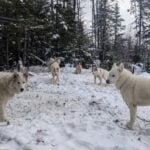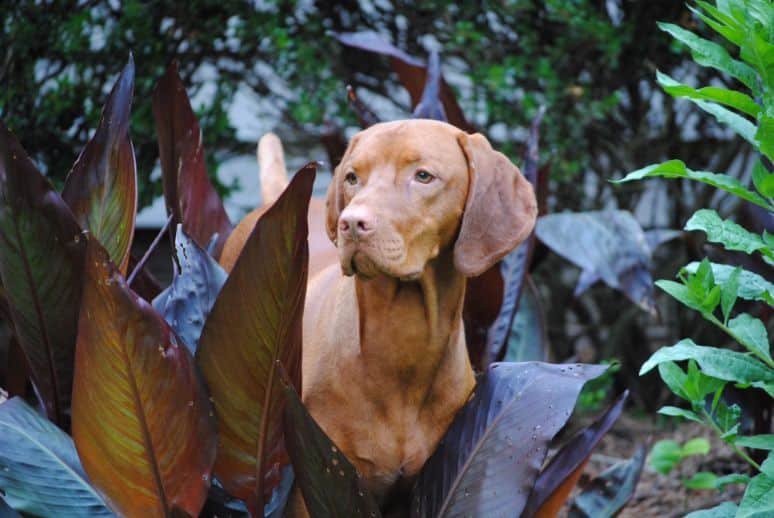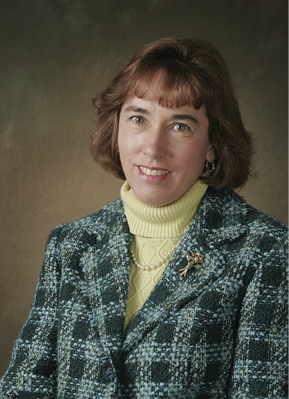


Home » Vizsla: The Versatile Velcro Dog

The incredible Vizsla has been a significant part of my life ever since I was first introduced to the breed in the mid-1970s. While attending Ohio State University, my college roommate invited me to her home where I was introduced to the Behi Vizslas of her parents, Bernard C. (Clif) and Hilda Boggs. Going back to the 1960s, the Boggs were active and influential members of the Vizsla Club of America as well as founding members of the Miami Valley Vizsla Club in Ohio. Clif and Hilda were very active in the breed, finishing many early champions as well as numerous field champions and dual champions. Active and prominent promoters of the breed and its versatility, the Boggs were always available to help anyone interested in learning more about the breed. I learned a great deal from this couple and consider them my first mentors and the ones most responsible for my involvement in the breed and in the sport of purebred dogs. Not only were they great promoters of the breed, Clif was also the author of the book, The Vizsla, which was first published in 1973 and has since had several revisions. That book is, in my opinion, still a great resource for anyone interested in the breed today.
Growing up in rural Northwest Ohio farm country, we always had dogs. I was exposed to numerous breeds and other farm animals. Until I was introduced to the Vizsla, I had never met a breed with so much desire to please their owner—regardless of the task. This versatility is what attracted me to the breed. From the beginning, I was hooked and I have continued to be for over 40 years. I was especially fortunate that my first Vizsla was a quality bitch that went on to become my first champion and, although she was only able to produce one litter, she blessed me with versatile puppies that excelled in the field as well as in the show ring; the foundation of the Lorac line of Vizslas.
When I began competing at AKC events there were only three major areas of competition for Sporting breeds; conformation, obedience, and field trials. So, I trained my dogs in all three areas. In those early years, the breed was pretty much an owner-handled breed with most owners competing in all three areas. Breeders bred not only for a good representative of the breed, but also one that was obedient and performed well in the field. Back then, many of the competitors in the area would gather to work their dogs together by holding “fun days” where we could improve our skills in the ring as well as for the field. Much knowledge and various techniques were shared, something that is rarely seen these days.
It was through Vizslas that I met my husband, Walter, over 38 years ago. Through him, I was able to see the Vizsla as well as other breeds from a new perspective. After our marriage, I became a student of many different breeds, learning about their various types and structure as it relates to their function. Through our experiences together and his encouragement, I applied to AKC to judge in 1997. I was approved to judge Vizslas, Pointers, Weimaraners, and Bearded Collies, which we had bred together. From that initial application, I have gradually applied for additional breeds while raising a family and maintaining my professional career as a world-renowned Human Embryologist.
WE DID GO TROUGH A PHASE WHERE IT SEEMED FANCIERS WANTED FINER-BONED
‘CUTE, SHOWY DOGS THAT STOOD LIKE A LITTLE DOBERMAN’
RATHER THAN THE COMPLETE MEDIUM-SIZED, ROBUST HUNTING DOG THAT WOULD PROBABLY RATHER BE HUNTING THAN STANDING IN A SHOW RING.
Throughout the years, I have witnessed the Vizsla breed go through various changes—some good and some less so. I have watched the breed grow in numbers from one of the rarer breeds to one whose popularity has exploded. It is now a breed with very high entries at most shows. Today, it can take more dogs to obtain a major towards a championship in the Southeastern US than it does for many of the other popular breeds such as Boxers, Dobermans, and many others. Although our numbers continue to grow, I hope that today’s breeders will remember the need for the breed to remain a gentleman’s shooting dog with the correct structure to work all day within a reasonable range of the owner without tiring, and with the scenting ability to find game.
During my tenure in the breed, the AKC breed standard has gone through two changes from the original standard approved on December 10, 1963. The 1963 standard had only one disqualification, and this was for size. In 1963, this disqualification was for more than two inches deviation from the standard either way; meaning male sizes ranged from 20-26 inches and female sizes ranged from 19-25 inches. Looking back at dogs from this time frame until the next revision in 1983, you find a wide size variation with many male dogs being much bigger and stockier than the dogs we see today. During the 1960s and ‘70s, it was not unusual to find champion (as well as dual champion) males close to 26 inches tall, with many females also approaching 25 inches. Looking back, most breeders of the time did attempt to breed to the middle size range in the standard. Also, in the original version under color it stated that small white spots on the chest or feet are not faulted. This was pretty vague, leaving much to interpretation. However, during that time frame, breeders used to say, “White on chest no bigger than a half-dollar.”
The second revision was approved in April of 1983 with three disqualifications: (1) Completely black nose; (2) Massive white on chest, white anywhere else on the body, solid white extending above the toes; (3) Any male over 25 ½ inches or under 20 ½ inches, and any female over 24 ½ inches or under 19 ½ inches at the highest point over the shoulder blades. In all my years observing Vizslas, I have never seen purebred Vizslas with a black nose; it would be an indication of crossbreeding. It did seem at that time that the amount of white on the chest was becoming more massive than previously seen. It is, however, in the Vizsla gene pool as Sari (one of the first Vizslas to arrive in the US) had massive white on her chest, and many of the US dogs in the early time frame did go back to her or her offspring. The size range was reduced to create a more consistent size range for the breed, making it, ideally, a medium-sized hunting dog. This did, however, result in some champion dogs of that time being over or under sized.
Another part of the standard that did have an impact on the breed was in the Body section of the standard, where it stated, “…the withers high, and the topline slightly rounded over the loin to the set-on of the tail.” This was confusing to many new owners/breeders as well as judges, which did result in dogs with a roached back and loin area, and a higher tuck-up (characteristic of a hound) being rewarded and bred. Also, the proportions of height-to-length were not addressed in this standard, which did lead to some longer bodied dogs as well as leggier dogs being exhibited. Narrowing down the height also appeared to result in shorter, bottom of the standard, dogs being rewarded over the more medium-sized dogs. We did go through a phase where it seemed fanciers wanted finer-boned “cute, showy dogs that stood like a little Doberman” rather than the complete medium-sized, robust hunting dog that would probably rather be hunting than standing in a show ring. It was during this timeframe in the 1990s that we started to see more of a split in the breed away from dual Vizsla to the show versus field type Vizsla.
Our most recent and current standard was approved on January 13, 2009. This standard now has five disqualifications for the breed: (1) Partially Black or Completely Black nose; (2) Solid white extending above the toes or white anywhere else on the dog except the forechest; (3) White extending on the shoulders or neck; (4) A distinctly long coat; (5) Size—Any male over 25 ½ inches or under 20 ½ inches, and any female over 24 ½ inches or under 19 ½ inches at the highest point over the shoulder blades. The height did not change from the previous standard. However, additionally, the partially black nose was added as well as the long coat. The white had more detail added, but, in my opinion, it still needs refining as it is still pretty vague and allows for even more white than I feel the original authors of the first standard would have approved. This revision did add clarity to the proportions of the Vizsla. It states, “While the Vizsla may appear square, when measured from point of breastbone to point of buttocks and from the highest point over the shoulder blades to the ground, the Vizsla is slightly longer than tall… The Vizsla should not appear long and low or tall and “leggy.” I have seen improvement in the breed with more dogs appearing with the correct proportions. However, I have also observed dogs now appearing “too square.” This is sometimes due to lack of angulation, giving them a leggy look that results in lack of correct reach and drive movement. Others are too long in body and short on leg. The Vizsla should be moderately angulated, front and rear, with enough angulation to result in a far-reaching, smooth trot with good reach and drive. This revision did refine many areas of the standard concerning the head, neck, and body. I feel the description of the topline has helped judges to understand five primary components of the topline: Starting with a slightly prominent scapula with a good layer of muscling at the highest point of the withers; blending smoothly into a level back; leading into a muscular, slightly round, short loin; concluding in a slightly round croup; with the tail set off the rounded croup and carried straight or slightly elevated, never straight up or over the back. High tails, however, are still an issue in the breed, resulting from flat croups as well as incorrect rear angulation.
I do feel we still have some work to do on the standard to further clarify some areas. One statement in the standard under General Appearance is the oxymoron of calling for a dog that is “Robust but rather lightly built…” This does not mean slightly built. It means a dog with enough bone and substance to be able to work all day in the field; being agile, not cumbersome. It means a dog with plenty of chest capacity for heart and lungs to be able to work without tiring; never slab-sided, narrow-chested or lacking in forechest. (The distance from the top of the withers to elbows is equal to the distance from elbows to the ground.) It means the dog should have good muscle tone and good body condition, with honorable scars acceptable. It also means that the rear should have good muscling both in the inner and outer thigh area, with let-down, straight hocks. Together, this all results in a dog that is as the standard states: “…a medium-sized, short-coated hunting dog of distinguished appearance and bearing.”
The discussion of the Vizsla would not be complete without mentioning its temperament, which is what makes them so attractive to people seeking to add a dog to their family (especially now with the Covid-19 Pandemic finding people working from home). They are highly intelligent dogs that love to be with their owners. We call them “Velcro dogs” as this is how close they wish to be to their owners. They are also very quick to learn, which makes them a good breed for owners seeking titles in whatever venue is desired. They have a very good nose, which means they not only excel at hunting upland game but also other types of wild game. Their highly sensitive nose is also an asset when competing in today’s performance arenas such as Barn Hunt and Scent Work. Their love of the water also makes them excel in Dock Diving competitions.
The Vizsla Club of America proudly boasts of two members of our breed with major accomplishments. The Vizsla is the first breed ever awarded an AKC triple championship. In the 1980s, Triple CH. Cariad’s Kutya Kai Costa, owned by Marianne and Robert Costa, was awarded his triple championship in show, field, and obedience. (This was before we added all the performance events we have today.) Then in 2000, a Vizsla once again became the first to be awarded five AKC championship titles; TC, AFC, MACH Legacy’s DeChartay UDX, MH, MX, AXJ, VC, owned by Jack Sharkey, earned her MACH to complete her fifth championship. Since 2000, Vizslas have continued to excel in all performance areas offered by AKC. The breed’s high intelligence gives it the amazing ability to analyze situations and determine the best way to obtain the desired results. Through the years, the Vizsla has also been proven to be a great service and therapy dog.
For me, it is the Vizsla that checks all the boxes for versatility. First and foremost, they are great members of the family. They are wonderful competitors on the bench, in the field, and in the obedience and agility rings as well as in numerous other competitive events. All these breed characteristics combine to make the Vizsla the most loyal and loving companion anyone would ever want.
Wishing everyone a safe and healthy Holiday Season and a happy and prosperous New Year!
THE DISCUSSION OF THE VIZSLA WOULD NOT BE COMPLETE WITHOUT MENTIONING ITS TEMPARAMENT, WHICH IS WHAT MAKES THEM SO ATTRACTIVE TO PEOPLE SEEKING TO ADD A DOG TO THEIR FAMILY…
THEY ARE HIGHLY INTELLIGENT DOGS THAT LOVE TO BE WITH THEIR OWNERS.
